Fidelity CFD
Cadence® Fidelity™ CFD Software is all-inclusive for meshing, solving, and post-processing. It carries industry-defining solver technology for fluid flow applications like turbomachinery, aerodynamics, and combustion physics.
Learn More
OVERVIEW
Aerodynamic studies involve the motion of air and its interaction with solid objects within this flow representation. Aerodynamics and aerodynamic principles are used frequently within computational fluid dynamics. Not only are the primary governing equations of aerodynamics used within CFD, but also in boundary layers for both the mesh generation and solver convergence, as well as turbulence modeling, and compressible flow theory. The future of aerodynamics in CFD contains many facets, but particularly in automotive, subsonic travel, hypersonics, and alternative energy development.
Products
The three primary facets to resolve in aerodynamics are lift, drag, and torque. Each of these have unique properties (lift coefficient, drag coefficient, lift force, and more) affected by the air flow involved. In an aerodynamic flow field, the properties you will most likely be looking at are temperature, pressure, velocity, viscosity, and density.

When examining velocity-based classification for flow, we are looking at speed regimes. The four primary velocity qualifications for flow are in subsonic, transonic, supersonic, and hypersonic flows. The beginning of velocity-dependent classifications is approximately when flow speeds move faster than 30% of the speed of sound, where flow characteristics are marked by compressibility effects.
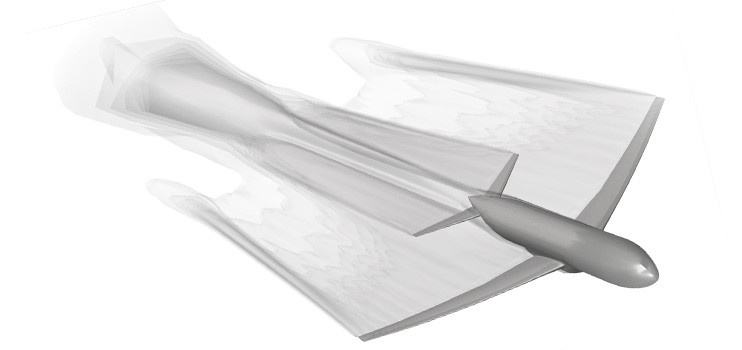
The other primary flow classifications at work in aerodynamics are in density and pressure-based classifications. Often, these classifications translate into compressible and incompressible flow definitions. These definitions depend upon how variable the density is during the flow. If the density remains nearly constant, we can assume incompressible flow (for ease of simulation, a pivot number to work from for incompressible flow is under Mach 0.3).
Aerodynamics and aerodynamic principles are built around some fundamental equations. Newton’s laws of motion certainly started the study of aerodynamics; however, in the world of computational fluid dynamics, aerodynamic forces are conventionally modeled through the Navier-Stokes equations. Other methods such as Lattice-Boltzmann and High Order solvers are gaining in popularity and capability.
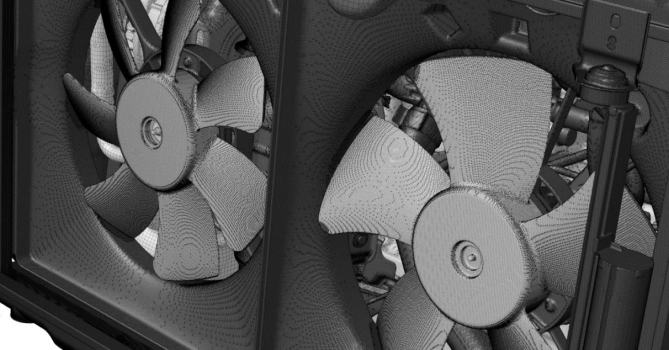
When discussing the fundamentals of aerodynamics, many of the reductions of underlying aerodynamic principles are modeled for optimizing propulsion mechanisms. Specifically, for airplane aerodynamics, an aerodynamics engineer would be looking at thrust, weight, angle of attack, and drag.
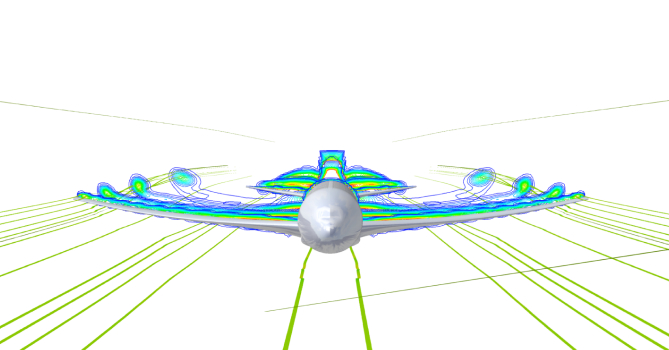
Angle of Attack (AOA) affects both lift and drag fundamentally throughout the design of an aircraft. AOA is the angle between a reference or chord line on an aircraft, usually, a wing or the center of the body, and the point at which the wing hits the relative wind. Optimizing AOA for particular flight functions is crucial for the overall efficiency of flightpath and airplane bodies, as AOA has a direct relationship with lift and drag: as AOA increases, so too does lift and drag, until AOA hits its stall point, at which point, depending on wing structure and a slew of factors, one can see either a sharp or tapered decline in lift.
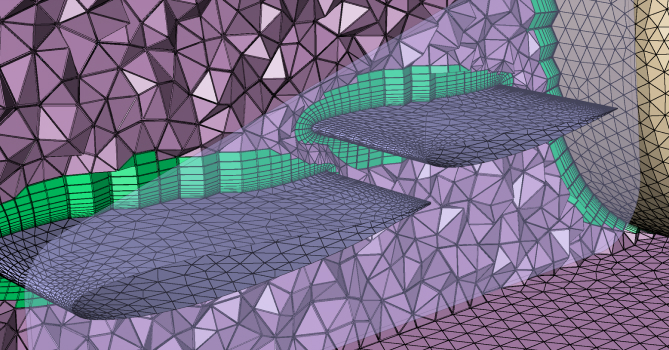
Drag is a vital force to contend with in aerodynamics. Often, drag is particularly relevant in structural integrity modeling and heat management models. The resistance created, drag force, acts in opposition to the motion of the solid body at work. The simulation of drag force has many unique iterations, such as representing specific turbulent flow vortices and eddies, creation of lift from drag forces and forming drag with local velocity and pressure changes.
One of the biggest mistakes in aerodynamics simulations is sacrificing other physical components for the sake of aerodynamic perfection. Unfortunately, we do not possess the technology or time to simulate every single physical phenomenon, scenario, and environment to 100% accuracy within any reasonable product timeline; nonetheless, here we are.
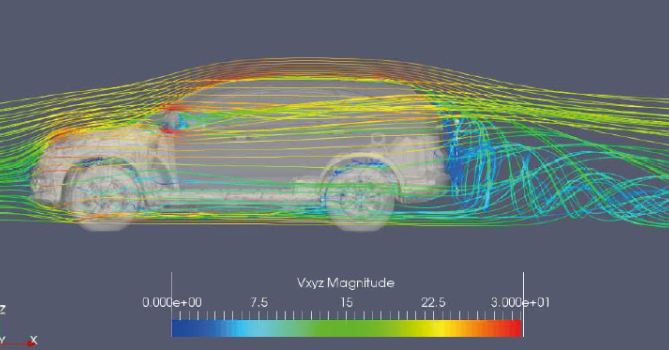
Solutions for aerodynamic CFD modeling in the automotive space are vast, with a constant push towards greater efficiency. One of the most definitive ways to make a vehicle more power efficient is through aerodynamic optimization. Optimizations can be in the form of weight distribution, shape, and form of the vehicle, to ensure airflow is directed in the right areas, managing vortex and eddy creation to minimize drag, and minimizing lift impact on the vehicle’s performance.
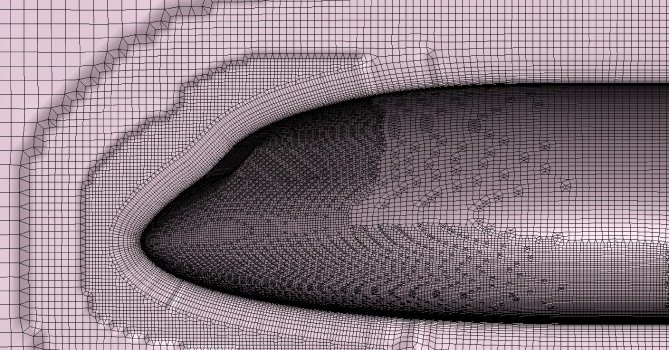
Most dynamics of an air-based-travel vehicle can be examined under the guise of aerodynamics. Helicopters, UAVs, drones, jets, and airplanes all have unique properties for propulsion, rotational lift, drag, angle of attack necessities, flight duration, and environmental specifications. The development of new aircraft is ever on-the-rise as new speeds and efficiencies of travel, such as supersonic commercial flights, hypersonic jets, and more electric commercial flights all require more finely-tuned attention toward the physical phenomenon reduced from aerodynamics principles. Solving these Navier-Stokes equations in a CFD simulation element enables the aerospace engineer to work towards solutions for the above difficulties.
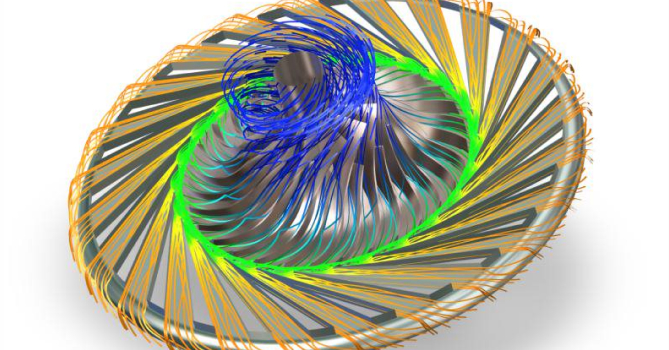
Whether it be helicopter propeller aerodynamics, large-scale fans for alternative energy and energy efficiency, or marine propellers, one can model the flow dynamics with CFD. Unlike other aerodynamic simulations, not only are turbomachinery being optimized for the air or fluid flow streams that they’re already a part of, such as wind and unique air densities, but these fans are also responsible for generating concurrent flows with their rotational mechanisms. Traditional aerodynamic forces such as lift and drag meet with turbulent flow and vortices on an immensely diverse spectrum of physical events.
While CFD is looking at flow regimes across the board, the actual flow for CFD tool implementation rarely changes. To run an iteration on a solver you need to have the mesh for it, and to have the mesh, you need to have the geometry for it. While it would be fantastic to say that we are the best-in-class for every possible solver function and mesh generation, the reality is that there are simply too many physical phenomena and partial differential equations to account for holistically. It is likely that there will always be some tools that are better than others at particular functionalities.

If you ask any aerodynamics engineer working in CFD simulations about their favorite part of CFD, it is very likely that none of them will say meshing. Meshing isn’t exactly what you write to your parents about; yet, the quality of mesh empowers solvers to be more accurate and complete iterations faster than if a mesh is done improperly. The Cadence meshing tools are capable of advanced mesh generation for those difficult and pivotal definitions, such as boundary layers, utilizing Delaunay triangulation and hybrid approaches alongside hexahedron cells to maximize accuracy in representation with mesh cell count size.
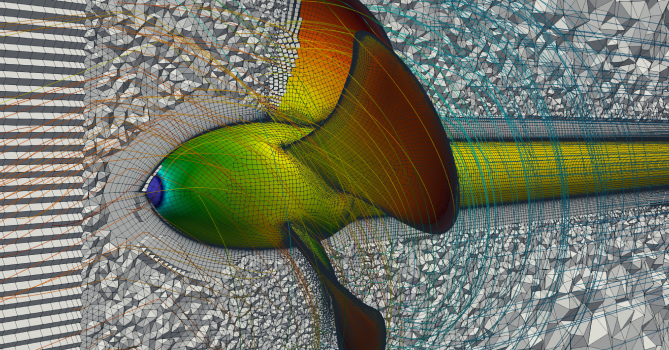
CFD solvers are always being fine-tuned to interpret more detailed and accurate meshes, implement equations more robustly, allow for greater computational prowess, and save time and cost. In CFD, an aerodynamics engineer would want to ensure the solver can work dynamically on large-scale iteration runs of various Navier-Stokes equations and reductions to ensure total design security. As mentioned, a purely aerodynamically optimized vehicle is probably failing in very many other regards, be it heat, structure, or some other physical phenomenon.
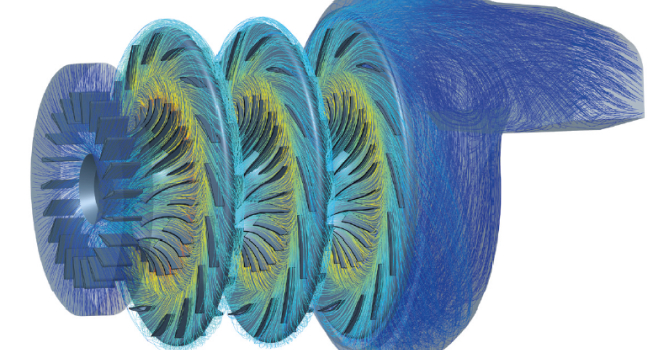
A vital tool in the CFD engineer’s toolkit is post-processing. Post-processing has many different iterations, which enable the visualization of potential problem spots in any design. A popular post-processing representation for aerodynamics is in streamline techniques. Streamlines for aerodynamics showcases flows against and around surfaces to observe air displacement, pressure changes, or velocity changes as flows encounter structures.
Resources
Keep yourself knowledgeable about the latest and greatest industry conferences and product developments.
Learn more about how our customers are using our CFD solutions to better their innovation.
View Customer StoriesFind a host of talks, papers, and researched developed by Cadence for your solutions.
View All Blogs, Webinars and White Papers